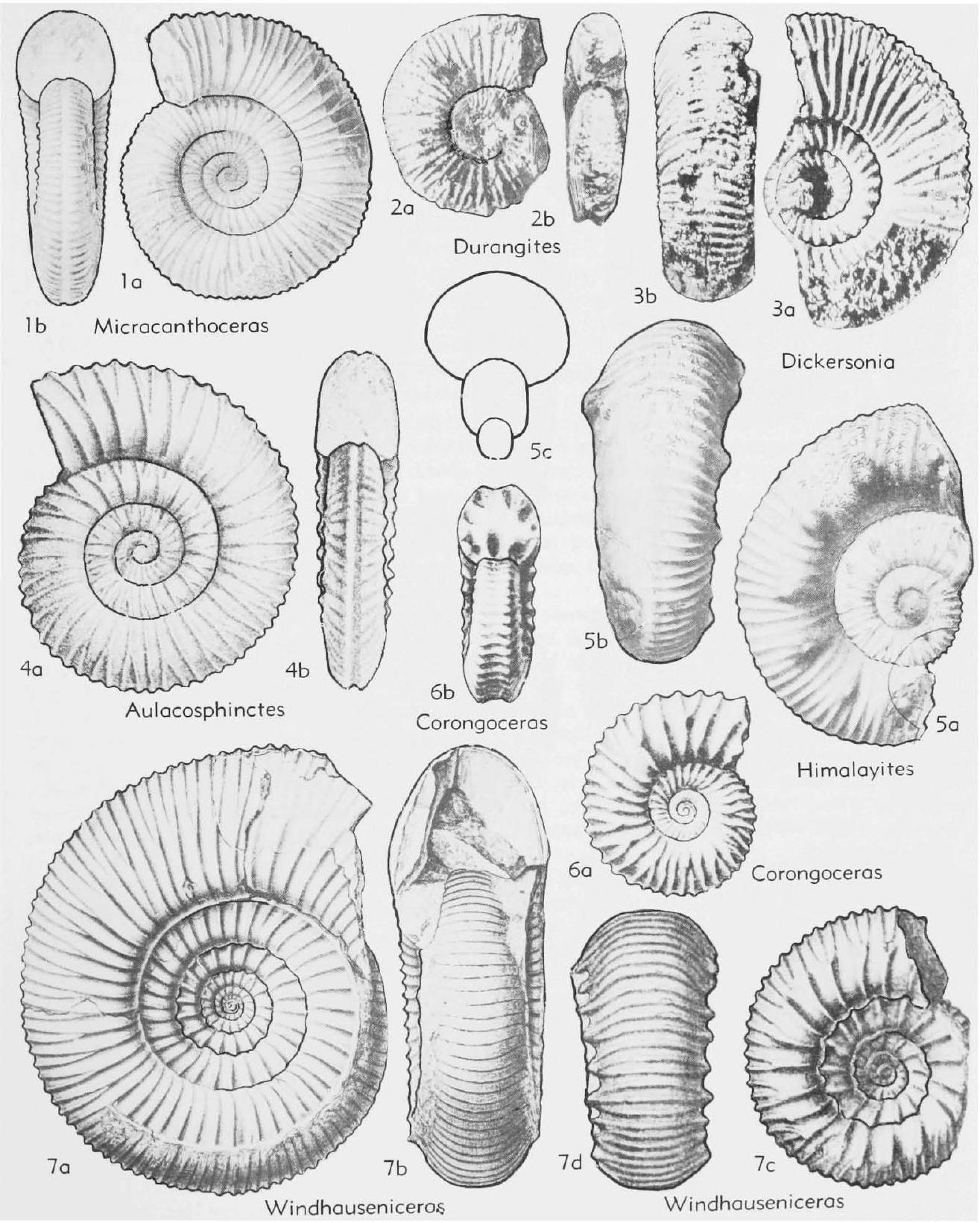Welcome to the Treatise on Invertebrate Paleontology!
Please enter a genera name to retrieve more information.

Himalayites
Classification
Phylum:
Mollusca
Class:
Cephalopoda
Subclass:
Ammonoidea
Order:
Ceratitida
Suborder:
Ammonitina
Superfamily:
Perisphinctaceae
Family:
Aspidoceratidae
Subfamily:
Himalayitinae
Formal Genus Name and Reference:
Himalayites Uhlig in BOEHM, 1904
Type Species:
H. treubi
Images
(Click to enlarge in a new window)
Fig. 468,5. *H. (H.) treubi, Indon., 5a-c, X0.5 (40*)
Synonyms
Geographic Distribution
S.Eu.-N.Afr.-Madag.Salt R. - Himalaya - Indon. - Mex.-Peru-Arg.
Age Range
Beginning Stage in Treatise Usage:
Tithon.
Beginning International Stage:
Tithonian
Fraction Up In Beginning Stage:
0
Beginning Date:
149.24
Ending Stage in Treatise Usage:
Tithon.
Ending International Stage:
Tithonian
Fraction Up In Ending Stage:
100
Ending Date:
143.1
Description
Evolute, inner whorls slightly compressed, outer whorls becoming rounded, then rapidly depressed, ribbing of inner whorls widely biplicate and simple, as in Aulacosphinctes, on middle and outer whorls are sporadic median lateral tubercles (spines on test), from which branch 2 to 4 secondaries, primary spine-bearing ribs are flared, but intermediate ribs remain simple, venter with median groove or smooth band, which may fade on last whorl
References
Museum or Author Information
Classification
Phylum:
Mollusca
Class:
Cephalopoda
Subclass:
Ammonoidea
Order:
Ceratitida
Suborder:
Ammonitina
Superfamily:
Perisphinctaceae
Family:
Aspidoceratidae
Subfamily:
Himalayitinae
Formal Genus Name and Reference:
Himalayites Uhlig in BOEHM, 1904
Type Species:
H. treubi
Images
(Click to enlarge in a new window)
Fig. 468,5. *H. (H.) treubi, Indon., 5a-c, X0.5 (40*)
Synonyms
Geographic Distribution
S.Eu.-N.Afr.-Madag.Salt R. - Himalaya - Indon. - Mex.-Peru-Arg.
Age Range
Beginning Stage in Treatise Usage:
Tithon.
Beginning International Stage:
Tithonian
Fraction Up In Beginning Stage:
0
Beginning Date:
149.24
Ending Stage in Treatise Usage:
Tithon.
Ending International Stage:
Tithonian
Fraction Up In Ending Stage:
100
Ending Date:
143.1
Description
Evolute, inner whorls slightly compressed, outer whorls becoming rounded, then rapidly depressed, ribbing of inner whorls widely biplicate and simple, as in Aulacosphinctes, on middle and outer whorls are sporadic median lateral tubercles (spines on test), from which branch 2 to 4 secondaries, primary spine-bearing ribs are flared, but intermediate ribs remain simple, venter with median groove or smooth band, which may fade on last whorl
